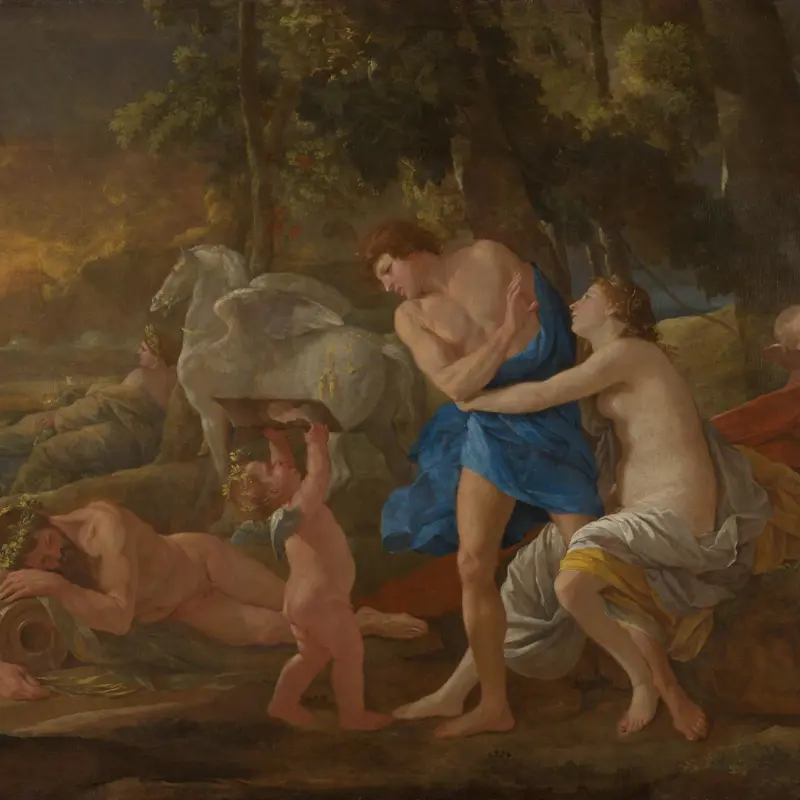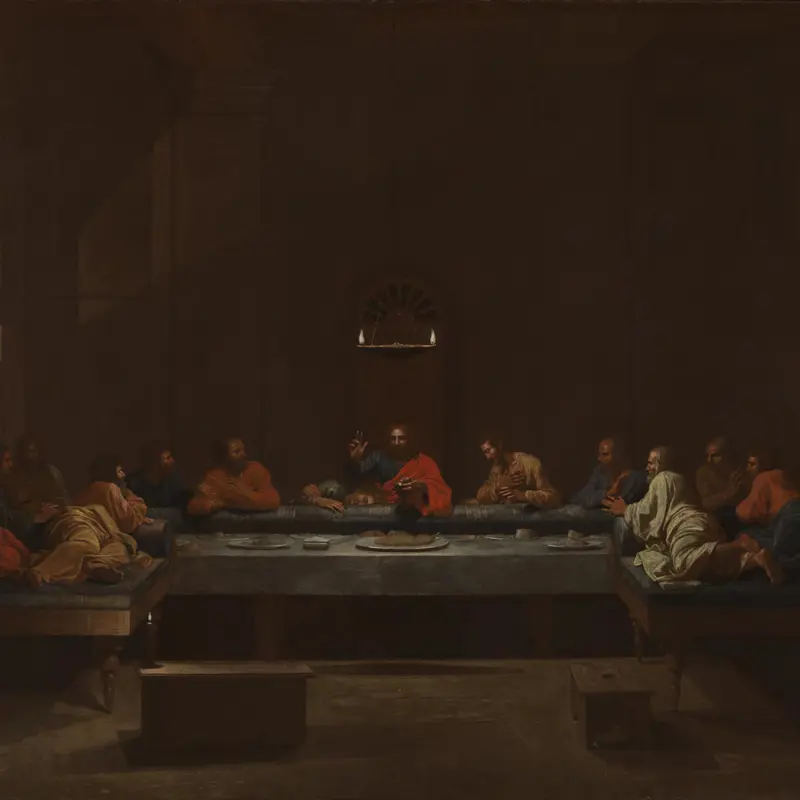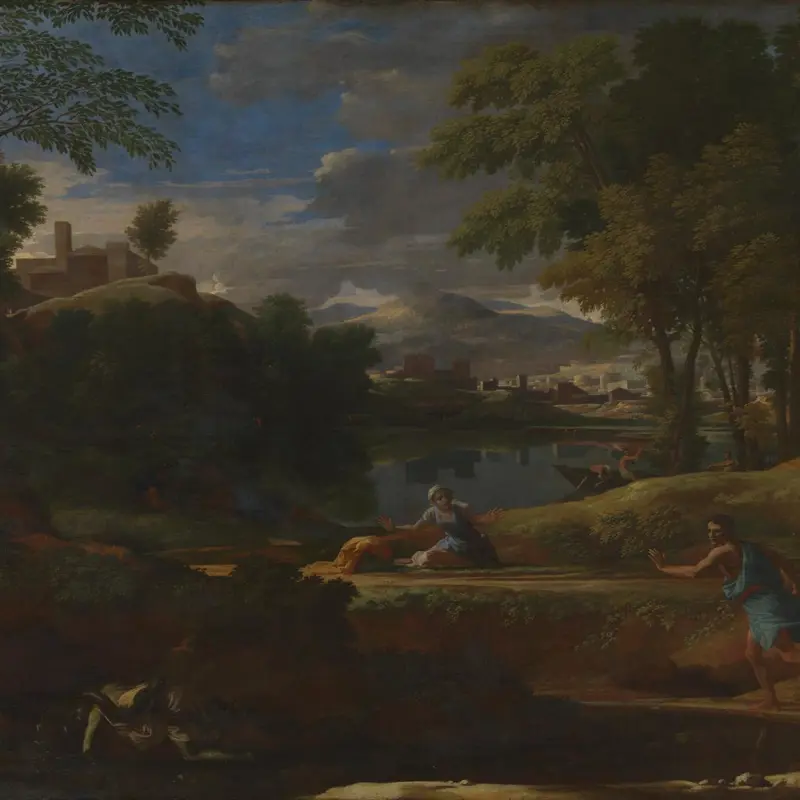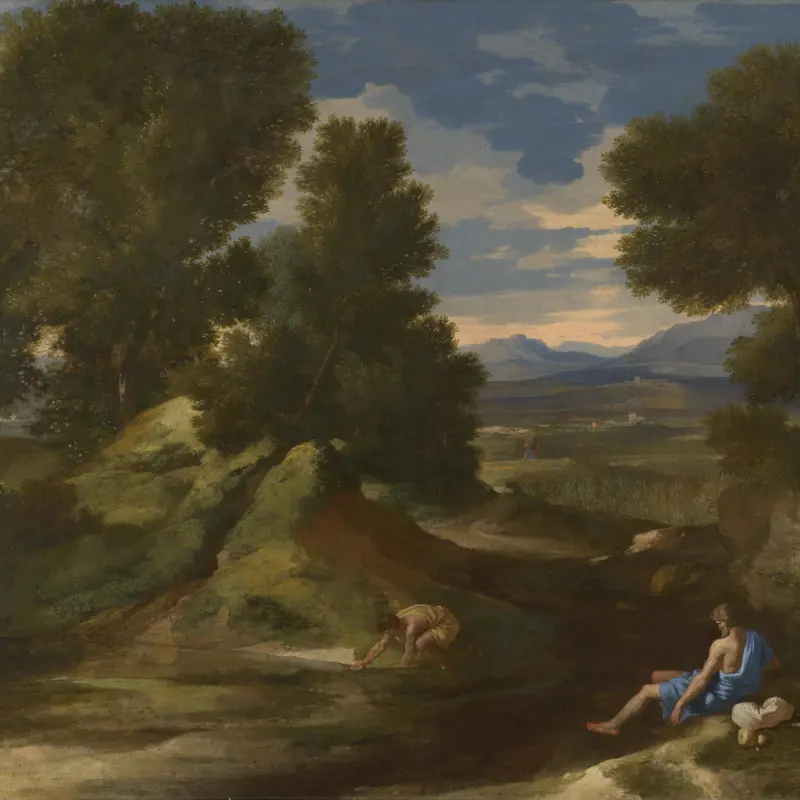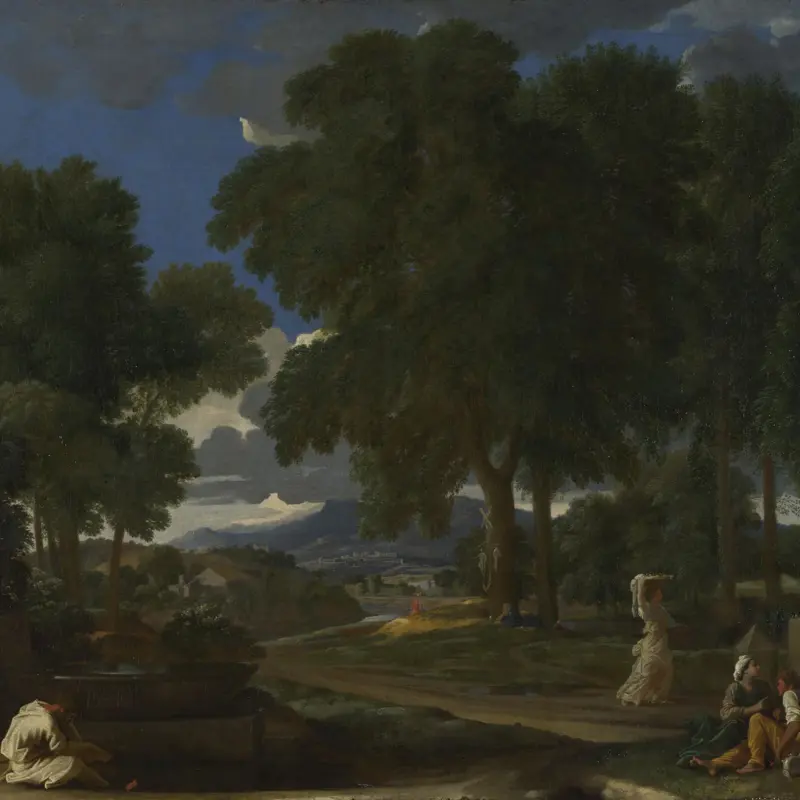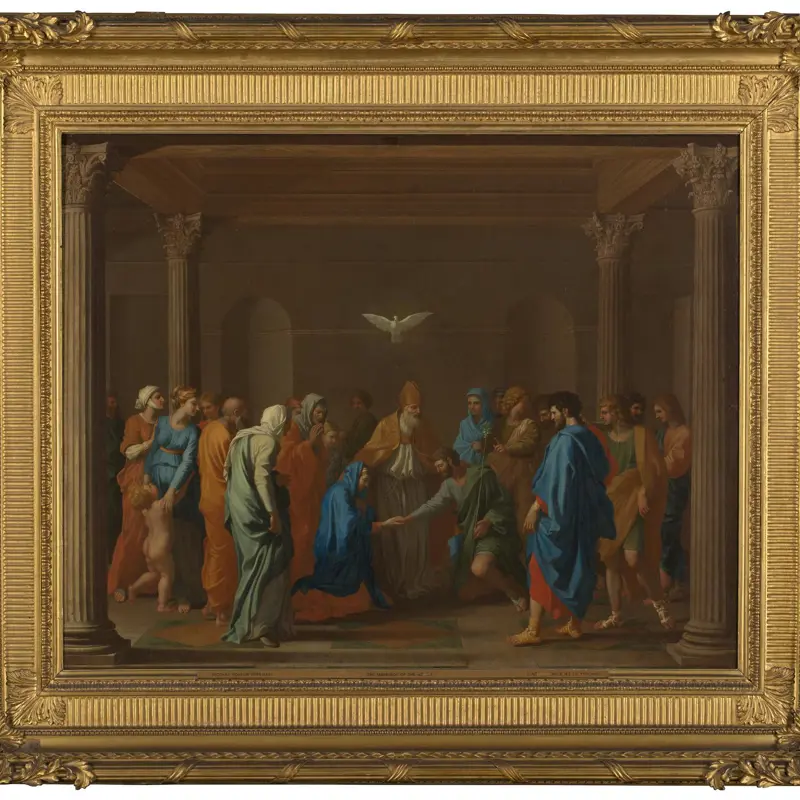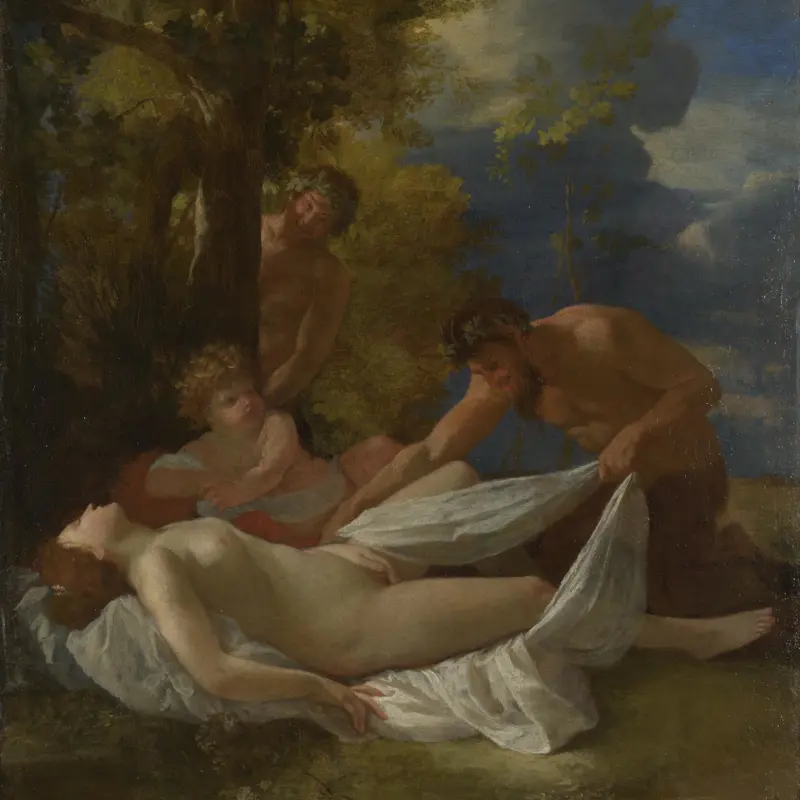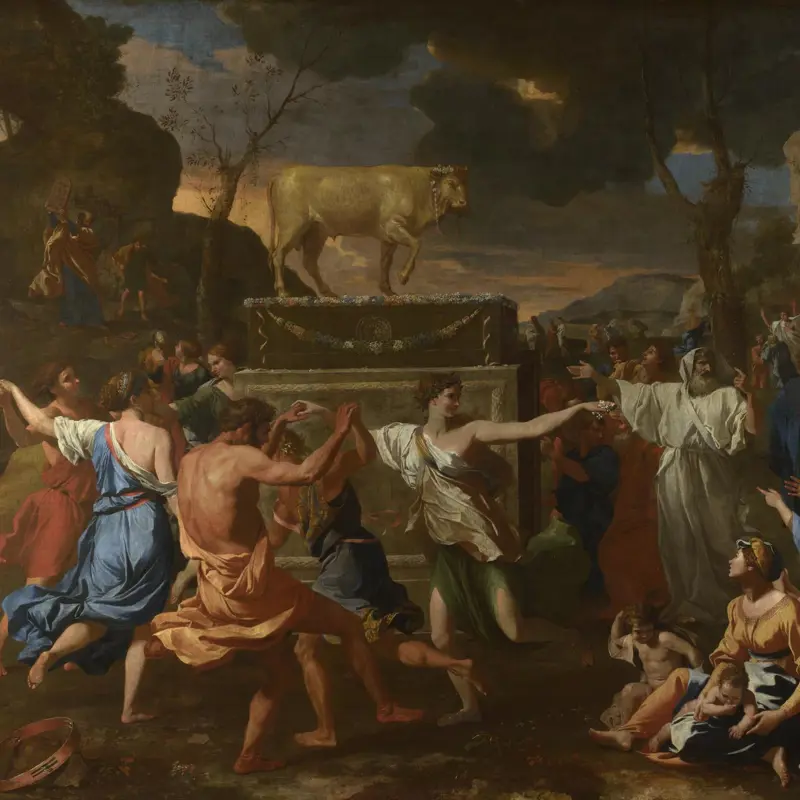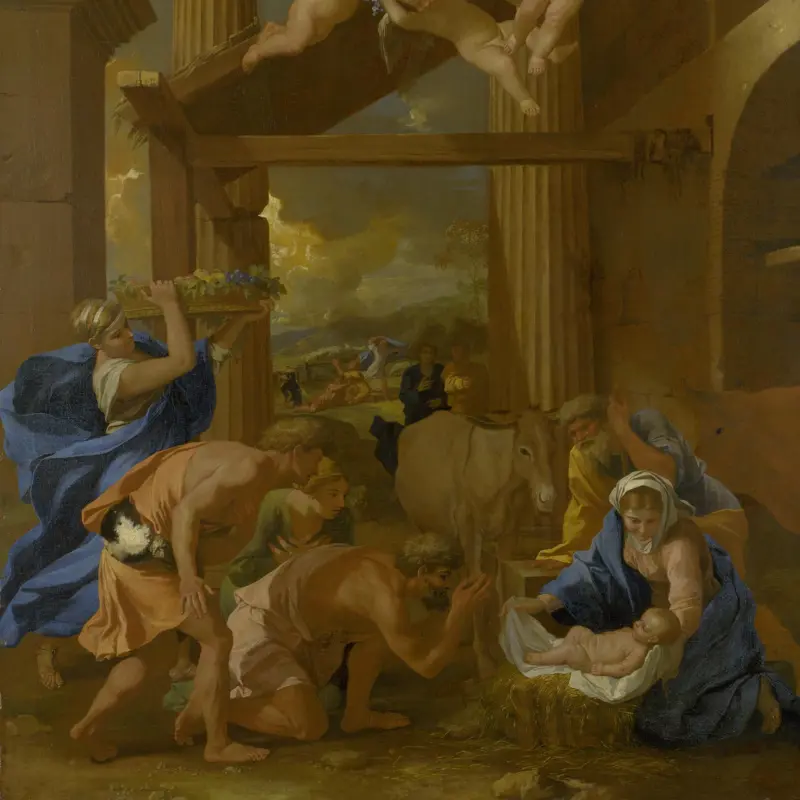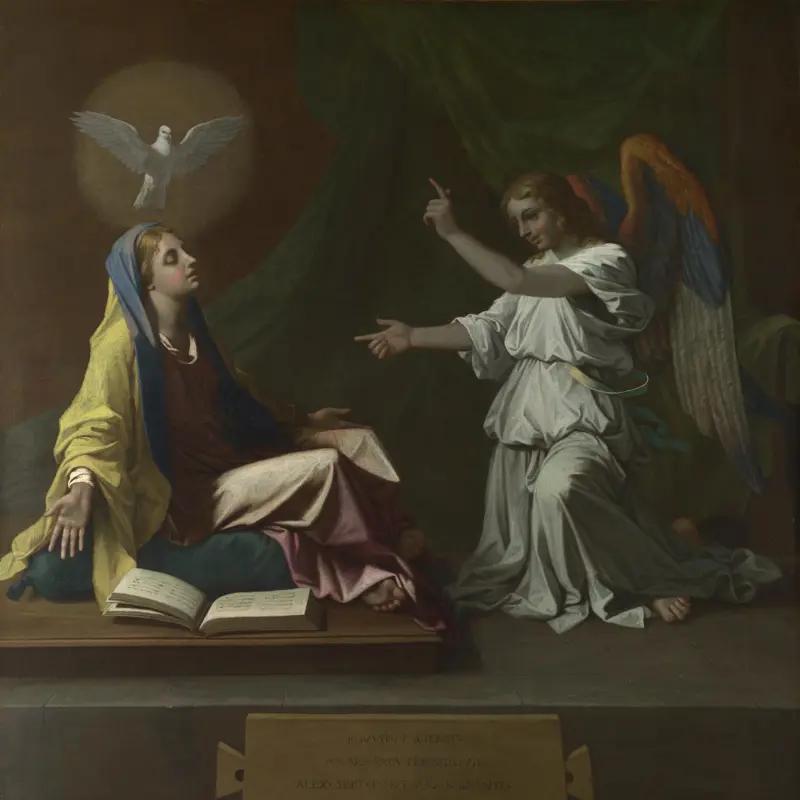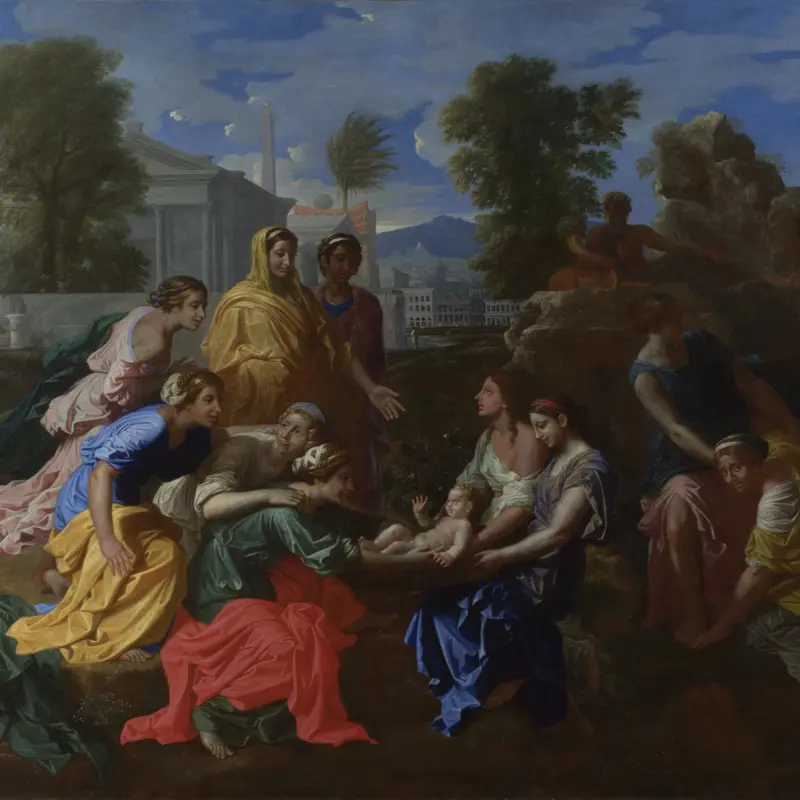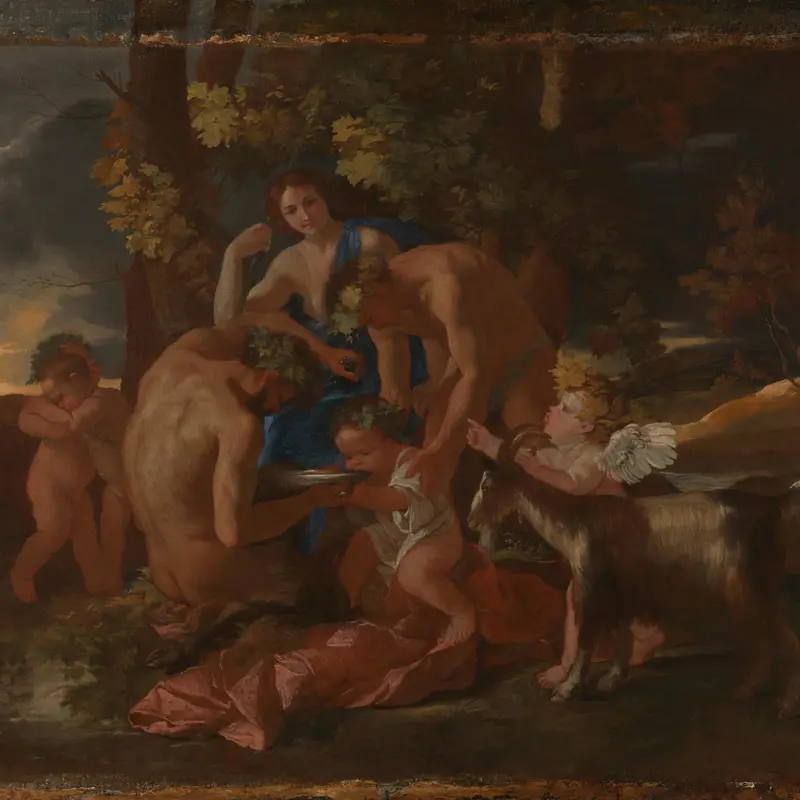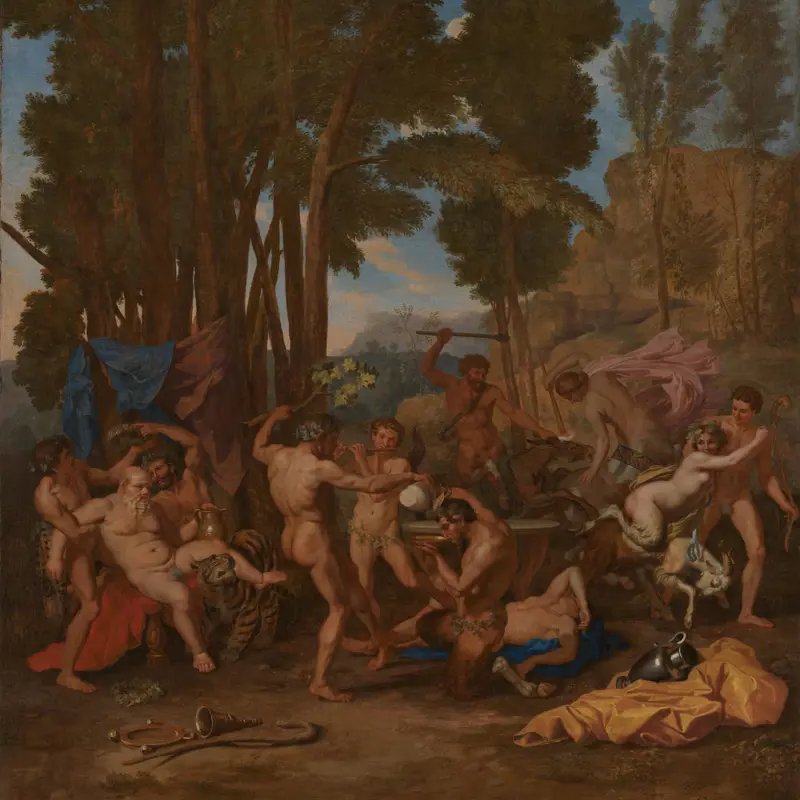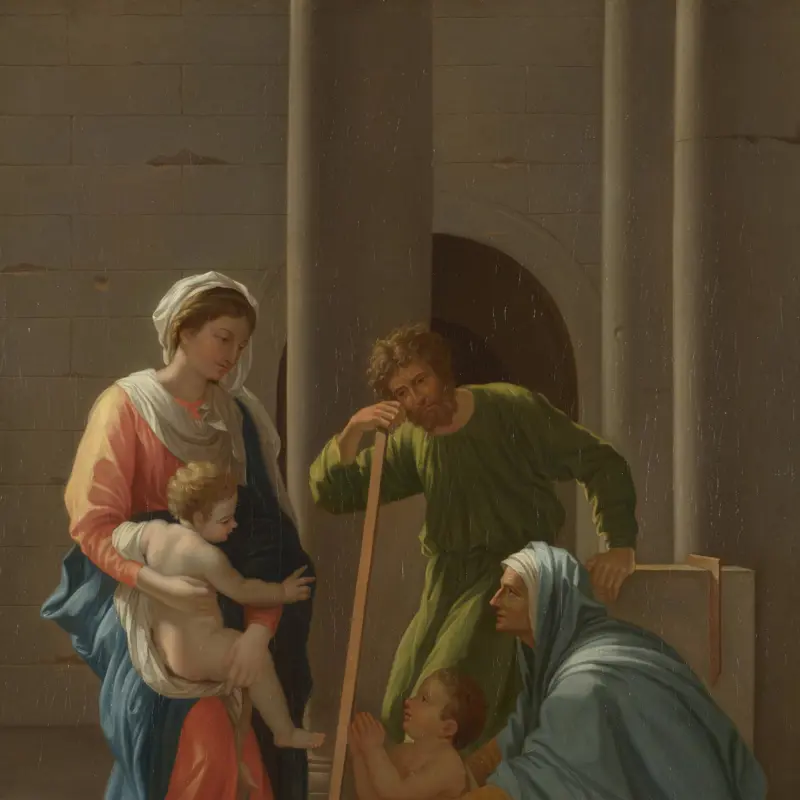Nicolas Poussin, 'A Bacchanalian Revel before a Term', 1632-3
About the work
Overview
In this wild party, men and women dance around a term – a carved bust of a bearded and horned man. This is traditionally identified as Pan, god of woods and fields, flocks and herds, although the statue could also be Priapus, god of gardens and fertility, who wears floral garlands and exposes his genitalia.
The grapes and dancing suggest that this is a Bacchic festival, like those held during ancient Roman times to encourage a successful harvest. In art and literature, partygoers at these events enjoy excessive drinking and fulfil their sexual desires, suggested here by the discarded vessels and exposed skin. The nymphs or frolicking female followers of the god Bacchus are accompanied by a lustful satyr, with horns and hairy, goat-like legs.
The idealised bodies, rigid draperies and the careful arrangement of the dancers reflect Poussin’s study of ancient sculpture. Boldly coloured fabrics contrast with the dancers' skin tones and the woodland foliage.
Key facts
Details
- Full title
- A Bacchanalian Revel before a Term
- Artist
- Nicolas Poussin
- Artist dates
- 1594 - 1665
- Date made
- 1632-3
- Medium and support
- oil on canvas
- Dimensions
- 98 × 142.8 cm
- Acquisition credit
- Bought, 1826
- Inventory number
- NG62
- Location
- Room 29
- Collection
- Main Collection
- Previous owners
- Frame
- 18th-century French Frame
Provenance
Additional information
Text extracted from the ‘Provenance’ section of the catalogue entry in Humphrey Wine, ‘National Gallery Catalogues: The Seventeenth Century French Paintings’, London 2001; for further information, see the full catalogue entry.
Exhibition history
-
2019Caravaggio and BerniniKunsthistorisches Museum Wien15 October 2019 - 19 January 2020Rijksmuseum Amsterdam14 February 2020 - 13 September 2020
-
2021Poussin and the DanceThe National Gallery (London)9 October 2021 - 3 January 2022J. Paul Getty Museum (Los Angeles)15 February 2022 - 8 May 2022
Bibliography
-
1672G.P. Bellori, Le vite de'pittori, Rome 1672
-
1725A. Félibien, Entretiens sur les vies et sur les ouvrages des plus excellens peintres, Trévoux 1725
-
1787L. Thiéry, Guide des amateur et des étrangers voyageurs à Paris, ou description raisonnée de cette ville, de sa banlieue, & de tout ce qu'elles contiennent de remarquable, vol. 1, Paris 1787
-
1824W. Buchanan, Memoirs of Painting: With a Chronological History of the Importation of Pictures by the Great Masters into England Since the French Revolution, London 1824
-
1829
J. Smith, A Catalogue Raisonné of the Works of the Most Eminent Dutch, Flemish, and French Painters: In Which is Included a Short Biographical Notice of the Artists, with a Copious Description of Their Principal Pictures […], 9 vols, London 1829-1842
-
1853J.V. Cousin, 'De divers tableaux du Poussin qui sont en Angleterre et particulièment de "L'Inspiration du poète"', Archives de l'Art Français, 1853
-
1854G.F. Waagen, Treasures of Art in Great Britain: Being and Account of the Chief Collections of Paintings, Drawings, Sculptures, Illuminated Mss. […], vol. 2, trans. E. Eastlake, London 1854
-
1914O. Grautoff, Nicolas Poussin: Sein Werk und sein Leben, Munich 1914
-
1914E. Magne, Nicolas Poussin, premier peintre du roi, 1594-1665, Brussels 1914
-
1946Martin Davies, National Gallery Catalogues: French School, London 1946
-
1947P. Hendy, An Exhibition of Cleaned Pictures of 1947: (1936-1947), London 1947
-
1951A. Blunt, Nicolas Poussin: The Adoration of the Golden Calf, London 1951
-
1953W. Friedländer and A. Blunt (eds), The Drawings of Nicolas Poussin: Catalogue Raisonné, part 3, Mythological Subjects, London 1953
-
1957Martin Davies, National Gallery Catalogues: French School, 2nd edn (revised), London 1957
-
1963C. Dempsey, 'Poussin and Egypt', Art Bulletin, XLV/2, 1963, pp. 109-19
-
1964C. Dempsey, Nicolas Poussin and the Natural Order, Ann Arbor 1964
-
1966A. Blunt, The Paintings of Nicolas Poussin: A Critical Catalogue, London 1966
-
1969K. Badt, Die Kunst des Nicolas Poussin, Cologne 1969
-
1980D. Wild, Nicolas Poussin: Band I, Leben, Werk, Exkurse, Band II, Katalog der Werke, Zürich 1980
-
1981R. Verdi, 'Hazlitt and Poussin', Keats-Shelley Memorial Bulletin, 1981
-
1981H. MaAndrew and H. Brigstocke, Poussin: Sacraments and Bacchanals: Paintings and Drawings of Sacred and Profane Themes by Nicolas Poussin 1594-1665, (exh. cat. National Gallery of Scotland, 16 October - 13 December 1981), Edinburgh 1981
-
1985C. Wright, Poussin Paintings: A Catalogue Raisonné, London 1985
-
1994P. Rosenberg, Nicolas Poussin, 1594-1665: Catalogue raisonné des dessins, Milan 1994
-
1994R. Verdi and P. Rosenberg, Nicolas Poussin, 1594-1665 (exh. cat. Galeries Nationales du Grand Palais, 27 September 1994 - 2 January 1995; Royal Academy of Arts, 19 January - 9 April 1995), Paris 1994
-
1995M. Clayton, Poussin: Works on Paper: Drawings from the Collection of Her Majesty Queen Elizabeth II, London 1995
-
1995H. Wine, 'Instruction and Delight: The Poussin Exhibitions at the Grand Palais, Paris and the Royal Academy', Apollo, CXLI/398, 1995, pp. 50-3
-
1995R. Beresford, A Dance to the Music of Time by Nicolas Poussin (exh. cat. Wallace Collection, 11 January - 9 April 1995), London 1995
-
1996E. Cropper and C. Dempsey, Nicholas Poussin: Friendship and the Love of Painting, Princeton 1996
-
1996P. Mitchell and L. Roberts, A History of European Picture Frames, London 1996
-
1999M. Hochmann, Villa Medici. Il Sogno di un Cardinale: Collezioni e artisti di Ferdinando de' Medici (exh. cat. Académie de France, Villa Medici, 18 November 1999 - 5 March 2000), Rome 1999
-
2001H. Wine, National Gallery Catalogues: The Seventeenth Century French Paintings, London 2001
-
2001
C. Baker and T. Henry, The National Gallery: Complete Illustrated Catalogue, London 2001
-
2003A. Graham-Dixon, In the Picture: The Year through Art, London 2003
Frame
This eighteenth-century French oak frame was made towards the end of Louis XIV’s reign, or possibly during the early Regency period. The corner cartouches feature fleur-de-lis and the centre cartouches are adorned with a stylised shell motif. Between the corner and centre cartouches there is decoration in the style of Jean Berain. A sanded flat leads to a French acanthus-leaf sight edge.
When the frame was acquired by the National Gallery in 1947, it underwent restoration and was entirely regilded.
In his correspondence, Poussin stated a preference for simple frames without gilding, so as not to clash with the colours of his paintings. He was probably inspired by the plain Salvator Rosa frames that he encountered when living in Italy. Poussin rejected the highly ornate carved frames produced in his native France, saying that they ‘confondent le jour’ (confuse the light). Despite this, ornate French Louis XIV and Louis XV frames remain popular for Poussin’s paintings.
About this record
If you know more about this work or have spotted an error, please contact us. Please note that exhibition histories are listed from 2009 onwards. Bibliographies may not be complete; more comprehensive information is available in the National Gallery Library.

